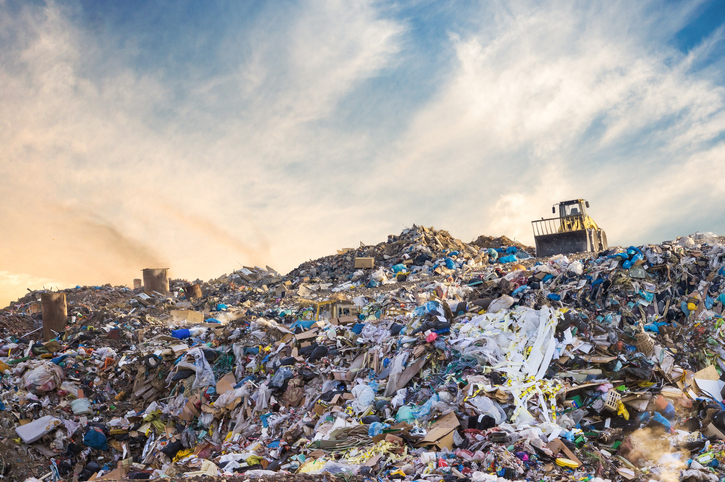In 2015, California’s former governor Edmund Brown Jr. set methane emissions-reduction targets for the state. Senate Bill 1383 requires that California reduce organic waste disposal 75 percent by the year 2025. Although most Californians did not begin to understand what these targets meant, 2022 marked the beginning of new waste disposal requirements for many statewide. These requirements include organics curbside-collection services and new waste collection bins designed specifically for organic waste (including, in some areas, bins designed to go inside residential refrigerators for food waste.)
Each city in California has slightly different requirements and all residents have received instructions for each individual collection process. Separate requirements have been put in place for business owners, who must also learn how to process organic waste products from their operations. These requirements ran the gambit from donating food waste to disposal of waste that cannot be donated. Many jurisdictions within California implemented these requirements in December of 2022, leaving residents and business owners to ask, “Why is this necessary?”
The answer is simple: methane gas.
According to a study by the Environmental Protection Agency when food goes into landfills, the nutrients in the food never return to the soil. When the wasted food rots, methane gas is created through an anaerobic process. Some studies have estimated that methane gas traps 80 percent more heat than carbon dioxide, making it one of the leading causes of global warming. Methane comes from other sources including oil and natural gas production; agricultural activities; coal mining and wastewater treatment. However, landfills are the third largest producer of methane in California, making it one of the leading causes of climate change in the state.
California has already seen the impact from changes to its climate. These changes include longer droughts, higher temperatures, larger storms, and erosion of coastal areas. In 2015, the drought cost California’s agriculture industry approximately $2.7 billion in revenue and over 20,000 jobs.
But methane gas emissions from landfills are not just a California problem. EPA studies on this issue estimate these emissions are the third largest source of human-related methane emissions in the United States, accounting for 14.5 percent of emissions in 2020. These emissions were equivalent to greenhouse gas emissions from approximately 20.3 million passenger cars driven for one year, or the carbon dioxide emissions from one year of energy use by 11.9 million homes. The EPA released a study in January 2022 where it estimated that reducing 25 percent of the food waste in landfills would reduce lifecycle greenhouse gas emissions by 30 percent.
Further, according to the EPA’s publication “Downstream Management of Organic Waste in the United States: Strategies for Methane Mitigation,” curbside-collection programs like those offered in California are gaining popularity nationwide. Just 500,000 residential customers in the United States had access to these programs in 2005. By 2017, that number jumped to more than 5.1 million. Some areas, such as Emmitt County, Mich., offer municipal yard waste and food waste drop off programs. All of these programs are designed to reduce methane gas emissions. Waste collected through these programs is either composted or processed through anaerobic digestion processes to carefully control the amount of biogas emitted into the atmosphere.
California will start its enforcement of the waste reduction programs in 2024, which gives both residents and businesses an opportunity to learn what goes in each waste bin and how to properly dispose of organic waste. The California Department of Resources Recycling and Recovery (“CalRecycle”) will oversee the enforcement of SB 1383’s provisions. CalRecycle will focus first on compliance assistance to jurisdictions needing assistance with training and guidance. CalRecyle will implement enforcement efforts only after a Notice of Violation is issued. The department will then determine if penalties are necessary. CalRecycle will also have the ability to place violators on a corrective action plan if warranted.
Meanwhile, other states have started similar programs including New York, Connecticut, Rhode Island, and Vermont. In New York State, for example, the New York State Food Donation and Food Scraps Recycling law (N.Y. Envtl. Cons. Law 27-2201) requires certain business which generate large amounts of food scraps to direct those scraps to organic recycling facilities under certain circumstances. Other provisions require certain businesses to donate excess edible food toward certain relief organizations. Penalties for noncompliance range from $250-1,000 per violation. Large generators of such food are defined as those that generate more than 2 tons of wasted food and scraps per week. There are a number of exemptions under the new provisions. More information regarding the program can be found at the DEC Web site [https://www.dec.ny.gov/chemical/114499.html]. This law does not apply to New York City, which maintains its own regulations for separation of organic waste, under Local Law 146.
As more jurisdictions implement waste reduction programs in response to climate change, business owners and residents should become more aware of what they can do to implement these goals to reduce global warming.

